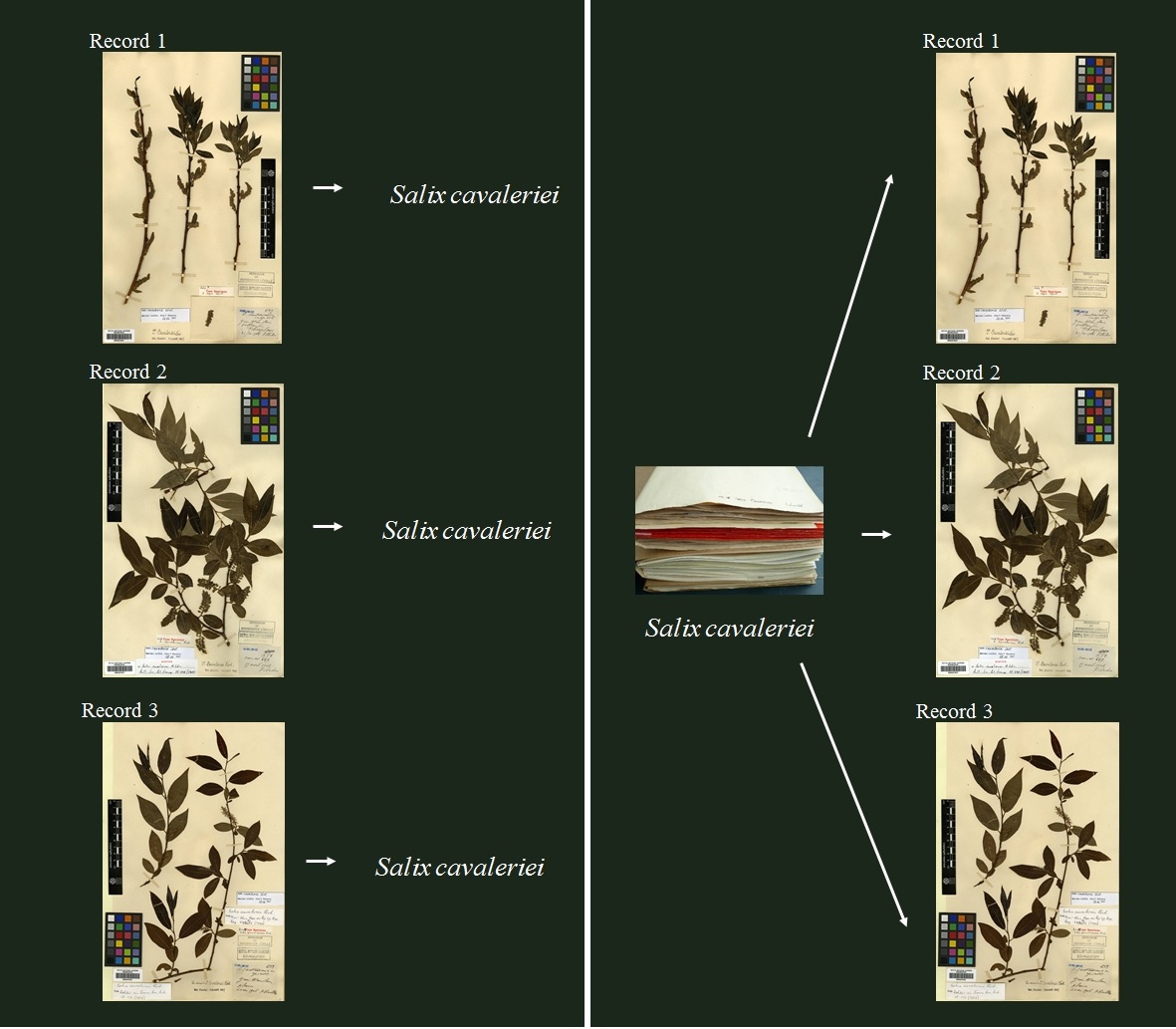There are nearly 3 million specimens being held in the herbarium at RBGE. We are working to digitise these specimens to make them available to people around the world, but if we want to complete this task in our lifetime then we need to find faster ways to enter the data and capture the images. Here we look at one of the ways we are using to speed up data capture.
Traditional data capture processes for biological collections have created a specimen record and then entered data associated with that specimen into the record (eg, collector, date, place of collection, etc). Database designers have investigated processes to improve speed and accuracy of the data entry and these can include look-up tables and data copy mechanisms.
An alternative process is to enter the curatorial data (eg, filing name and geographical region) which are constant for a batch of specimens within a folder, and then to create the individual specimen records, each with a barcode as a unique identifier. This process allows the very rapid creation of specimen records with a minimal amount of data entered for each specimen.
This process also means that curatorial data such as the filing name of the specimen, which may not be written on the specimen itself, can be captured from the folders and cabinets. The data being capture, although minimal, does result in an accurate cataloguing of the collections. In addition, these preliminary records can be used to link images and other information. They also be expanded using a range of data entry methods including Optical Character Recognition.

